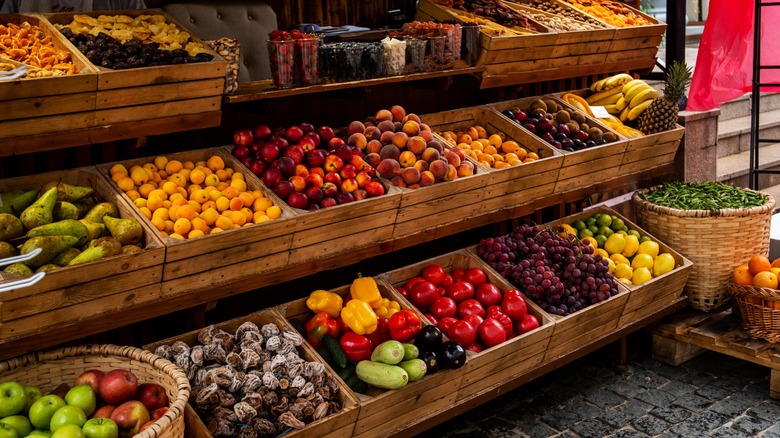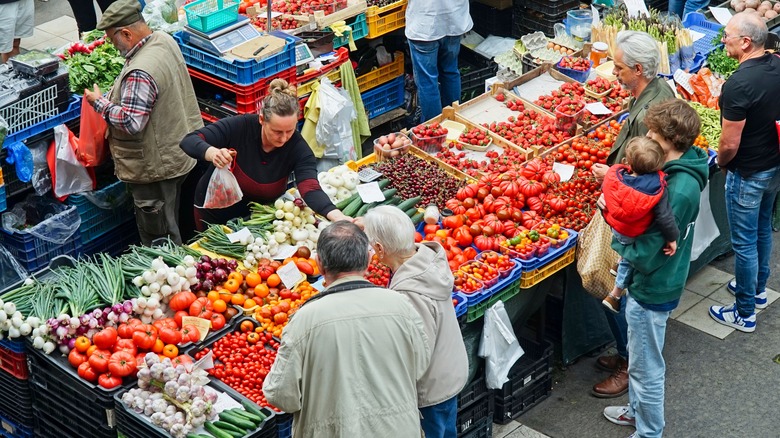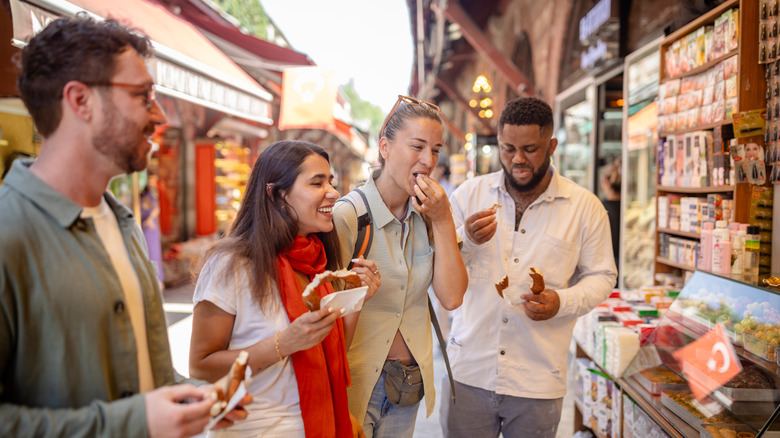Tourists In Europe Can Enjoy Authentic Food & Culture At These Shops, Per Rick Steves
Upon paying a visit to any European country, you may feel that to have an authentic food experience, you must visit those high-end, highly popular restaurants, the best of the best. And while these places are highly rated for a reason, they tend to leave you wanting, at least in terms of authenticity. While it can sometimes be a challenge to discern which restaurants offer an authentic experience and which are tourist traps, popular European travel expert Rick Steves has shared tips for which spots to visit to get a bite of authenticity with a delicious side of culture.
In his piece titled "Turning European Meals into Memories", Steves suggests that to "have a memorable meal, you don't need to eat at a place with a Michelin star, wait in a long line, or use a website like TripAdvisor to tell you what's hot." Instead, for a genuinely authentic experience, he suggests making your way to a local market hall. While some are more geared towards tourists (such as the Boqueria Market in Barcelona), many others offer fair prices, fresh produce, delicious meals, and excellent people-watching.
According to Steves, "All over Europe, Industrial Age glass-and-steel farmers' markets are getting a new lease on life as trendy food halls. They still come with farmers market dimensions, but they've been spiced up with great eateries, priced for local shoppers, and serving the freshest ingredients." Markets in Europe are much more than just places to buy produce — they're an essential part of the culinary and cultural heartbeat of a city. Wandering through one is like opening a window into the daily life of locals. You get a sense of what's in-season, what people are cooking at home, and what flavors define the region.
Enjoying Europe's food markets
As an avid traveler through Europe myself, I would say that sometimes certain markets are geared more towards the touristy crowd rather than the locals. While places such as Time Out Market in Lisbon, the Boqueria Market in Barcelona, or the Mercado de San Miguel in Madrid are all beautiful and fun places to walk around and delight the senses, they are not exclusively geared towards those trying to pinch their pennies. This isn't to say that in these beautiful and highly popular markets you won't find stalls selling delicious produce or restaurants serving up local fare — you just won't find it cheap.
There are many others, however, that offer a very authentic experience, with stalls of fresh produce, generations-old cafes, and fishmongers selling the catch of the day. Make your way to a market for lunchtime, "as many are geared toward the working crowd, they tend to be most vibrant" during this time. To properly choose the right stall, Steves recommends looking "for a line of nine-to-fiver natives: They eat out every day and invariably know the best place for an affordable, fill-the-tank bite."
However, locals tend to do their shopping early in the morning, especially for fresh produce, meat, and fish. If you arrive mid-morning and the market is already bustling with families, elderly shoppers, and people carrying shopping baskets — that's a good sign. If it's full of tour groups after 11AM, it's likely more touristy. Watch who's shopping. Are people in office clothes grabbing lunch? Older women picking out produce? Parents with kids? These are the people who live there, not just passing through. Locals don't usually carry cameras or stand around taking photos — they're there to shop, not for a photo-op.
How to find an authentic food market
How else can you ensure you're in the right place for an authentic experience? First of all, markets situated nearer major tourist attractions or city centers tend to be geared towards visitors. Instead, look for a market that is off the main tourist trail, in a residential neighborhood, suburb, or even smaller side street. These are often where locals go to shop for weekly groceries. Go ahead and ask your hotel or host where they shop for produce or lunch, rather than ask for the most popular market. In a local market, prices are usually clearly marked and relatively fair, especially for staples like fruit, cheese, meat, eggs, or bread. If you see inflated prices, lots of tasting stations, or aggressive selling tactics, it's likely catered to tourists.
Steves suggests that (not only in markets) but throughout restaurants in Europe, "you'll find the most authentic dining places have a small selection on a handwritten menu in a native language. The menu's small because they're going to cook up just what they can sell out for the day, it's handwritten because it's shaped by whatever's fresh in the market that morning, and it's in one language because they're targeting local, return customers rather than tourists."
Similarly, if the vendors start speaking the local language first, that's a strong indicator you're in the right place. You'll notice customers chatting with stall owners, calling each other by name, or asking for the usual. That kind of relationship usually means it's a market built on repeat business, not tourist traffic. By focusing on where locals shop, you're not just finding better prices — you're discovering the soul of a place through its food. Local markets are where regional traditions, recipes, and ingredients thrive.


